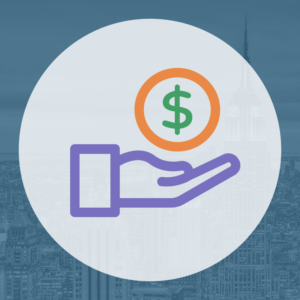 Years ago, my older brother, living in Minneapolis, asked me to walk into the Peloton studio in downtown Manhattan to do some reconnaissance on this fancy bike. After checking out the latest that fitness technology had to offer, I knew it wouldn’t take long for him – an avid cycler and tech junkie – to buy one. When Heather and I flew to visit him, there it stood proudly on display in his studio apartment. Of course, he told me how great it was and that we too should consider buying one. Having logged only one spin class in my life, I curtly told him, “I don’t spin.” Heather was intrigued. But with fancy gym memberships, and an even smaller apartment in an even bigger city, there was no room for this bike in our lives. Literally.
Years ago, my older brother, living in Minneapolis, asked me to walk into the Peloton studio in downtown Manhattan to do some reconnaissance on this fancy bike. After checking out the latest that fitness technology had to offer, I knew it wouldn’t take long for him – an avid cycler and tech junkie – to buy one. When Heather and I flew to visit him, there it stood proudly on display in his studio apartment. Of course, he told me how great it was and that we too should consider buying one. Having logged only one spin class in my life, I curtly told him, “I don’t spin.” Heather was intrigued. But with fancy gym memberships, and an even smaller apartment in an even bigger city, there was no room for this bike in our lives. Literally.
When our daughter Hazel came into the world, our lives changed in an instant. They became work, Hazel, sleep, Hazel, sleep, work, Hazel. Aside from power-walking a bassinet up Third Avenue, all physical activity came to a grinding halt. We complicated things more by deciding not to stay in the city after all, and began the insane process of buying a home with a newborn. Work, Hazel, sleep, work, home, Hazel, sleep…
By summer 2017, our daughter was thriving, but we were not. I have been described by many as a tall, noodley gentleman, so I was absolutely stunned the first time my suit pants and tailored button-downs started to feel snug on my body. Heather will be the first to tell you how awful she felt after trading in nine years of walking miles a day for a family SUV and five minutes at lunchtime to stretch her legs.
We considered the options of joining a local gym or buying a Peloton. As you might have guessed, one of us really wanted that bike. Having just setted into our new home, the last thing I wanted to do was buy an expensive piece of exercise equipment that could easily become a glorified dust collector in our home. But since Heather knows exactly how my financial advisor of a brain works, she asked me to look at the costs to see if it owning one made sense. Challenge accepted!
The first thing I did was research what the average cost of a gym membership is today. According to a few reputable websites, including one article by CNBC, it appears that your average gym membership costs about $50/month. However, if catering to your bougiest desires, you can easily spend closer to $200/month at establishments like Equinox or Lifetime Fitness. By the way, this does not include initiation fees, which can range from $100-$200. Things don’t get any better with non-gym alternatives like Physique 57, which can run anywhere from $120-$350 month depending your needs. And with your average yoga class costing $12-16/namaste, running up the tab isn’t all that difficult.
Now, for the bike. The cost of a Peloton breaks down like this. The bike itself is $1,995, without delivery, a subscription to the classes and taxes. A 12-month subscription is $39/month and delivery costs $250. Naturally, you’re going to need some mandatory gear such as shoes ($125/pair), but the rest is optional (e.g. a special floor mat, weights, clothing, etc.). It’s worth noting that Peloton offers a few accessory bundles, which can save you a few bucks if you’re going to splurge on gear. Therefore, at a minimum, you’re looking at $2,850 before taxes, rounded.
Now, when we purchased ours, we took advantage of their financing offer, which was 0% interest for 39-months. The only “catch” to this offer is that you are obligated to buy 39-months of classes at the standard rate. That’s $1,521 worth of service. It’s a commitment for sure. So, if using this offer, you divide your total purchase price, which includes tax, by 39. The result is your monthly payment. For us, it came out to $109/month, all in.
While these financing offers are attractive, remember that failing to make your monthly payments and failing to pay everything off by the end of the 0% offer could result in some hefty interest charges and penalties. Furthermore, I’d be remiss if I failed to encourage anyone to carefully examine how borrowing, in general, fits into your overall financial picture. Because this decision is not a small one.
By taking advantage of the financing offer, things didn’t appear all that bad. For $109/month, we would be paying roughly the same amount of money for two people to go to your average, local gym. In being really honest with ourselves, if we did join a gym, we would probably be signing up for a place that was more expensive than $50/month. Therefore, owning a Peloton, despite being hailed as a piece of luxury workout equipment, didn’t seem all that “luxurious” on our wallets. I will admit, however, that without the financing, the purchase would have been a significant outlay of cash. So, I encourage those who are paying upfront to configure your own breakeven point in the future if trying to replicate this exercise (no pun intended).
Now, one thing we must consider is that a Peloton bike is not full-service gym. It’s not like we’re comparing apples to apples here. Remember when I told my brother, “I don’t spin”? Well, not enjoying this bike would likely pose a major issue for me, let alone anyone, when thinking about if buying a Peloton is “worth it.” I honestly wasn’t worried so much about Heather getting on it frequently enough as me, but I was still concerned that life would simply catch up to us once again, especially if we wanted to have more kids and not to mention our increasingly busy careers.
In the end, the Peloton vs. gym argument came down to how demanding our lives are. The fact that Heather and I both commute to the city for work most days of the week and have a toddler to smother made the cost/benefit relationship of owning one very attractive. Waking up even earlier than we already do or finding the energy at the end of a long and exhausting day just wasn’t going to fit in our crazy lives. We don’t even have enough consistency in our workweeks to take turns going out to a gym at night. And if you think that’s nuts, we know people that hire babysitters so that they can sneak out to the gym! I don’t like to exercise enough to pay two people for me to do it.
And surprisingly, I enjoy our Peloton more each time I ride it. So far, I’ve completed about 50 rides, which has me exercising 3-4 days a week. What’s even greater than the convenience of a solid workout right in my home is the fact that I am getting to do something that’s a hell of a lot more fun than what I’d be doing at a gym. Full and fair disclosure, it’s not more fun than playing tennis or volleyball, but being told I am a “boss” and that “my best is good enough” by some your favorite instructors is pretty sweet if you ask me (shout out to Ally Love and Alex Toussaint).
As a financial advisor, it’s my job to make sure my clients are making smart decisions when it comes to their money. There’s no question that frivolously spending more than $3,000 on some trendy exercise equipment is a bad idea, but I what I hope this blog post provides is how one should think about purchasing a Peloton in a way that makes as much financial and practical sense as possible. It you’re going to use it, and use it consistently, it could very well be one of the best investments you could make in yourself.
Douglas A. Boneparth is New York City’s Financial Advisor for Millennials and President of Bone Fide Wealth, LLC. He is the co-author of The Millennial Money Fix and sits on CNBC’s Digital Financial Advisor Council. He also serves as the CFP Board Ambassador for New York and is frequented in the press as a personal financial expert. You can follow him on Twitter @dougboneparth.
